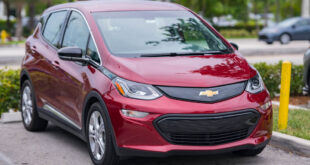Electric Car Home Chargers: Easy and Efficient Charging Electric cars are revolutionizing how we think about transportation, and one of the essential aspects of owning an EV is understanding the role of electric car home chargers. Charging at home not only saves time but also offers convenience, cost efficiency, and control over your energy consumption. This comprehensive guide explores everything you need to know about electric car home chargers, from types to installation, benefits, and maintenance.
Understanding Electric Car Home Chargers
Electric car home chargers, also known as EVSEs (Electric Vehicle Supply Equipment), are devices installed at residential properties to provide electric vehicles with the power they need. These chargers come in different types, primarily categorized by their power levels:
- Level 1 Chargers: Utilize standard 120-volt outlets, offering slow charging suitable for overnight use.
- Level 2 Chargers: Operate on 240 volts, delivering faster charging times and requiring professional installation.
- Level 3 Chargers (DC Fast Chargers): Typically used in commercial settings, these provide ultra-fast charging but are rarely used at home due to high costs.
Why Install an Electric Car Home Charger?
Installing a home charger comes with several benefits:
- Convenience: Charge your vehicle overnight without visiting public charging stations.
- Cost Efficiency: Save money by taking advantage of off-peak electricity rates.
- Enhanced Battery Life: Regular charging at home helps maintain the health of your EV’s battery.
- Environmental Impact: Reduce your carbon footprint by using renewable energy sources like solar panels.
- Home Value Increase: Homes with EV chargers are increasingly attractive to buyers.
How to Choose the Right Home Charger
When selecting an electric car home charger, consider the following factors:
- Compatibility: Ensure the charger matches your EV’s make and model.
- Charging Speed: Assess your daily driving needs to determine if a Level 1 or Level 2 charger is more suitable.
- Smart Features: Look for Wi-Fi connectivity, mobile app control, and scheduling features.
- Installation Costs: Budget for both the charger and professional installation.
- Safety Certifications: Choose chargers with UL certification or equivalent safety standards.
Step-by-Step Installation Process
- Assess Your Electrical System: Consult a licensed electrician to evaluate your home’s electrical capacity.
- Choose the Location: Select a spot near your parking area with easy cable access.
- Upgrade Electrical Panel (If Needed): Some homes may require an upgrade to support a Level 2 charger.
- Install the Charger: Follow the manufacturer’s guidelines and local codes.
- Test the System: Ensure the charger is functioning properly before regular use.
Maintenance Tips for Electric Car Home Chargers
- Regular Cleaning: Keep the charger and cables clean to prevent dirt buildup.
- Inspect Connections: Check for loose connections or signs of wear.
- Software Updates: Update firmware if your charger has smart features.
- Protect Against Weather: Use covers or install chargers in sheltered areas to avoid damage.
- Professional Servicing: Schedule periodic inspections to maintain optimal performance.
10 Tips for Using Electric Car Home Chargers
- Use off-peak hours to save on electricity costs.
- Invest in a smart charger for remote monitoring and scheduling.
- Clean charging cables regularly to prevent dust accumulation.
- Ensure proper ventilation in the charging area.
- Avoid overcharging your EV to preserve battery health.
- Install surge protection to safeguard against electrical spikes.
- Keep an eye on energy usage via charger apps.
- Store the charging cable properly to avoid tangling or damage.
- Test the charger regularly for consistent performance.
- Familiarize yourself with your EV’s charging requirements.
10 FAQs About Electric Car Home Chargers
- Q: Can I install a home charger myself?
A: It’s recommended to hire a licensed electrician for safety and compliance. - Q: How long does it take to charge an EV at home?
A: Level 1 takes 8-20 hours, while Level 2 charges in 4-8 hours, depending on the battery size. - Q: Is it expensive to charge an EV at home?
A: Charging costs depend on electricity rates but are generally cheaper than gas. - Q: Can I use solar panels to power my charger?
A: Yes, integrating solar panels can make EV charging eco-friendly and cost-effective. - Q: What is the lifespan of a home charger?
A: Most chargers last 10 years or more with proper maintenance. - Q: Are home chargers compatible with all EVs?
A: Most chargers use universal connectors, but compatibility should be verified. - Q: What happens during a power outage?
A: Your EV won’t charge during outages unless you have backup power. - Q: Can multiple EVs be charged simultaneously?
A: Dual-port chargers can charge two vehicles, though charging speed may reduce. - Q: Is special insurance required for home chargers?
A: Some homeowners add coverage for EV charger installations; consult your provider. - Q: Are there incentives for installing home chargers?
A: Many governments offer rebates or tax credits for home charger installations.
Conclusion
Investing in an electric car home charger is a smart move for EV owners. It offers unmatched convenience, cost savings, and environmental benefits. By selecting the right charger and following best practices, you can ensure seamless charging while enhancing your vehicle’s performance.
As the adoption of electric vehicles grows, having a reliable home charging system becomes essential. Whether you’re new to EVs or an experienced owner, understanding the nuances of home chargers will empower you to make informed decisions that align with your lifestyle and sustainability goals.
 oto car insurance used car repair
oto car insurance used car repair
